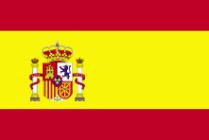WAR AND REMEMBRANCE -- This week, Madrid commemorates the bicentenary of the city's uprising against French occupation forces in the early 19th century. The celebrations include a parade, concerts of music of the period, theater productions, and a season of films on the subject, with the earliest produced in 1927. But the most vital link to the tumultuous events of May 2 and 3, 1808, is an exhibition at the Prado Museum of paintings by Goya, who was living and working in the Spanish capital at the time. The museum's enormous exhibition "Goya en Tiempos de Guerra" (Goya in Times of War) -- one of the biggest displays of the artist's work ever mounted -- places Goya's work in the context of political and military developments during what is today widely identified as the Peninsular War. As one of the more successful painters of his time, he has left us brilliant portraits of some of the key participants, including the remarkable group painting of the Spanish King Charles IV and his family, and portraits of Manuel Godoy, the country's powerful first minister, and Arthur Wellesley, the Duke of Wellington -- all of which are in the exhibition. Napoleon's attempt to extend his empire into the Iberian Peninsula was ultimately defeated on the battlefield by a British army brilliantly commanded by Wellington, and in the towns, villages, and wilderness by a vengeful Spanish population who ambushed and killed French soldiers whenever they could. The Prado exhibition culminates in the two most famous artistic renditions of a popular uprising in the whole history of painting. Large scale, and densely packed with dramatic detail, the two works are sequential and painted to be shown together. In the first, called simply "The 2nd of May, 1808," the artist shows angry Madrilenos attacking mounted Mamelukes, Napoleon's Arab mercenaries. In the center of the action, an insurgent has half dragged a terrified Mameluke off his horse and is in the act of castrating him with his dagger. The second painting, "The 3rd of May 1808," is the day of retribution, as the French execute hundreds of Madrilenos in retaliation. A firing squad takes aim at a group of prisoners; some have already been dispatched, while others wait their turn in the background.
Corridors of Power: Reporting from Spain

